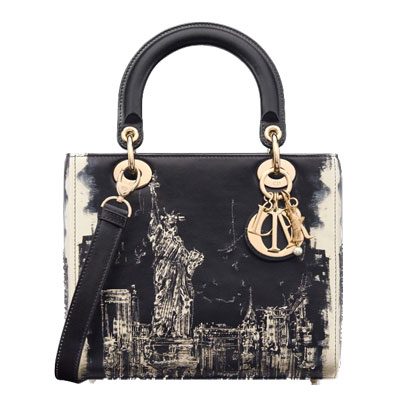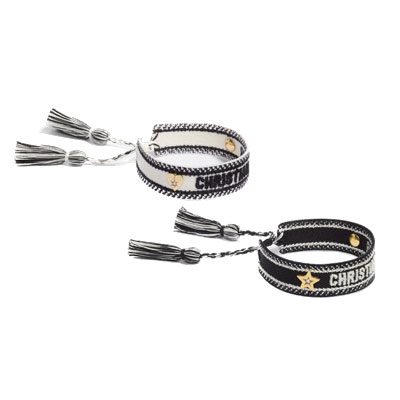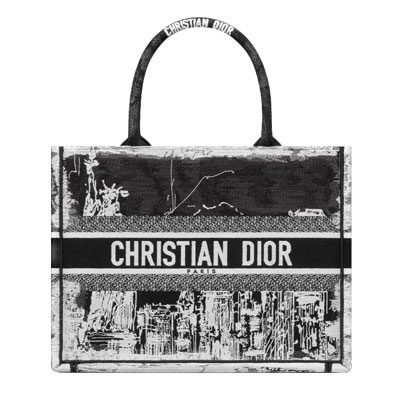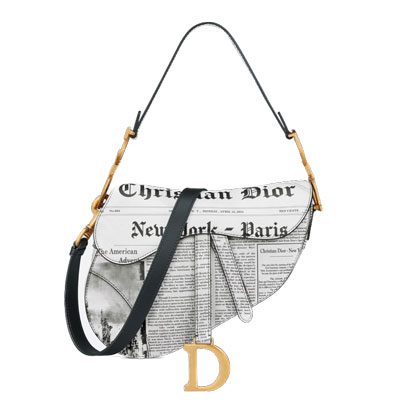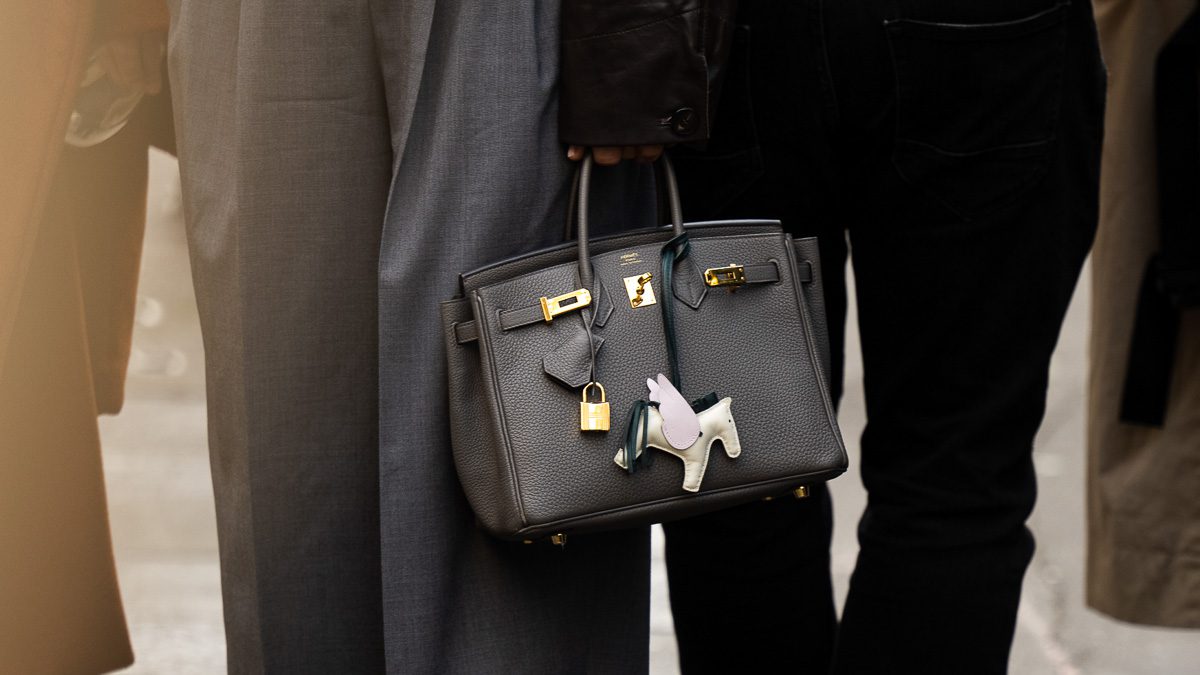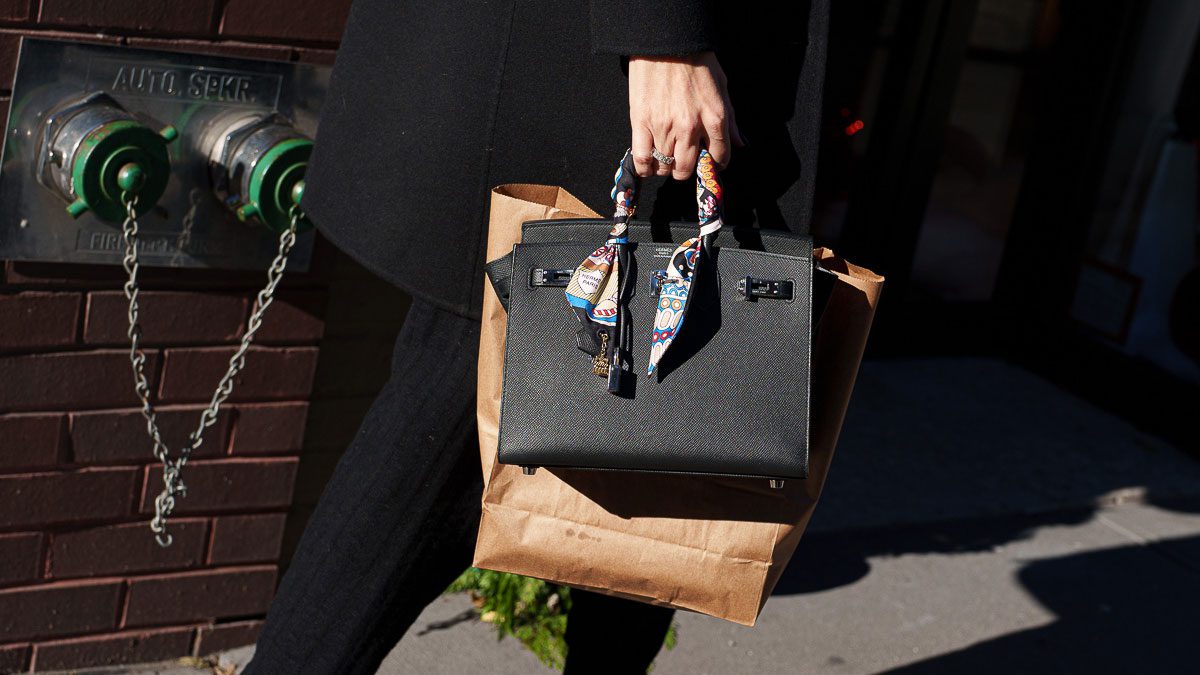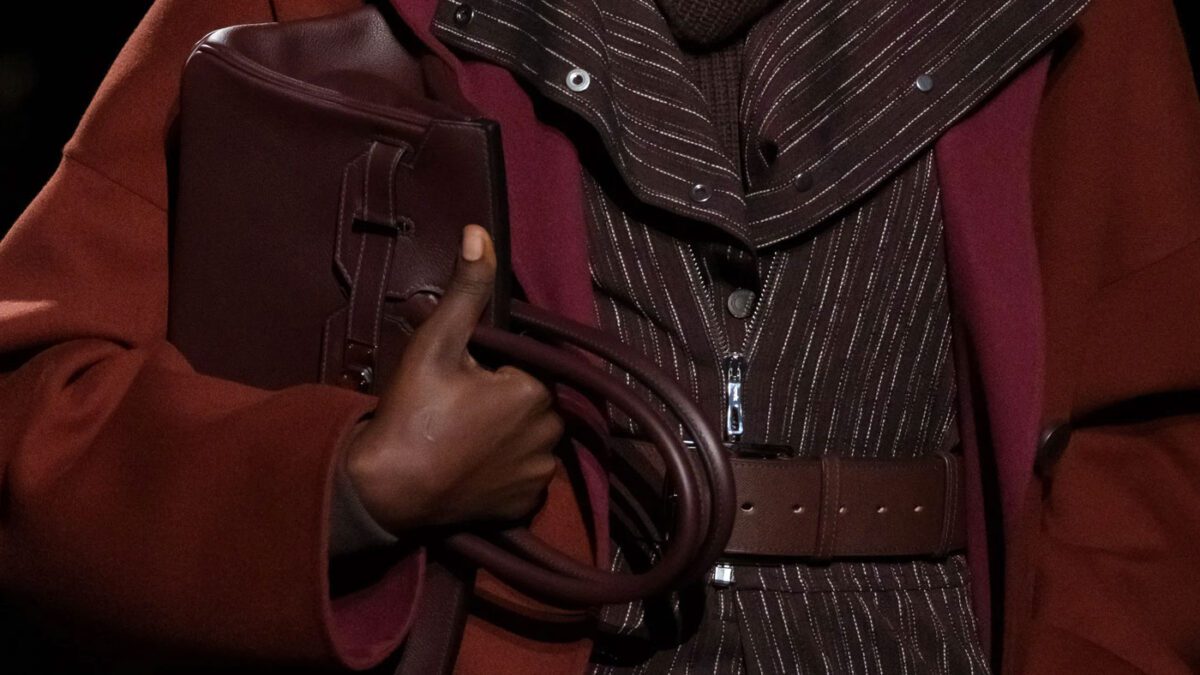Welcome to Part Two of our Ultimate Guide to Hermès Leathers for 2023.
Part One of the Guide covered all of the non-exotic leathers currently being utilized by Hermès for bags, from Barenia to Volynka, and included information on leather sourcing, the most durable and the most popular leathers, and the most often-confused leathers.
This part of the Guide covers all of the exotic leathers currently being utilized, from Alligator to Ostrich, and includes information on CITES and Hermès’ longstanding commitment to sustainability.
Table of Contents
Alligator (Alligator Mississippiensis; Exotic Leather)
Alligator is considered an exotic leather and is denoted on the bag by a square stamp. Alligator is very similar in appearance to Crocodile but can be distinguished by the lack of the “pore”, which looks like a dot in the center of each scale; this pore is part of the Croc’s ciliary sense organ, which Alligators do not have. Hermès’ Alligators are farmed in Florida. As it is hard to find large skins, Alligator is generally used on smaller bags.
The surfaces of Alligator items are delicate and should be treated with care. Alligator items must be kept away from water; because it isn’t glazed or otherwise treated, if an Alligator item gets wet, the water can create a permanent mark or stain (although it can be glazed, that should never be done more than twice to prevent creating an uneven surface, which can break down over time). Alligator items come with a CITES certificate which should be carried with the bag when traveling.
PurseForum Links: How Does Your Alligator/Croc Hermès Age?, Crocodile and Alligator Photos
Matte Alligator
The finish of the Matte Alligator skin is created by rubbing the skin with felt, which means the skin has to be as perfect as possible because any defects or blemishes will be visible. Matte Alligator items tend to cost a little more than Shiny Alligator (although Alligator items cost less than Crocodile).
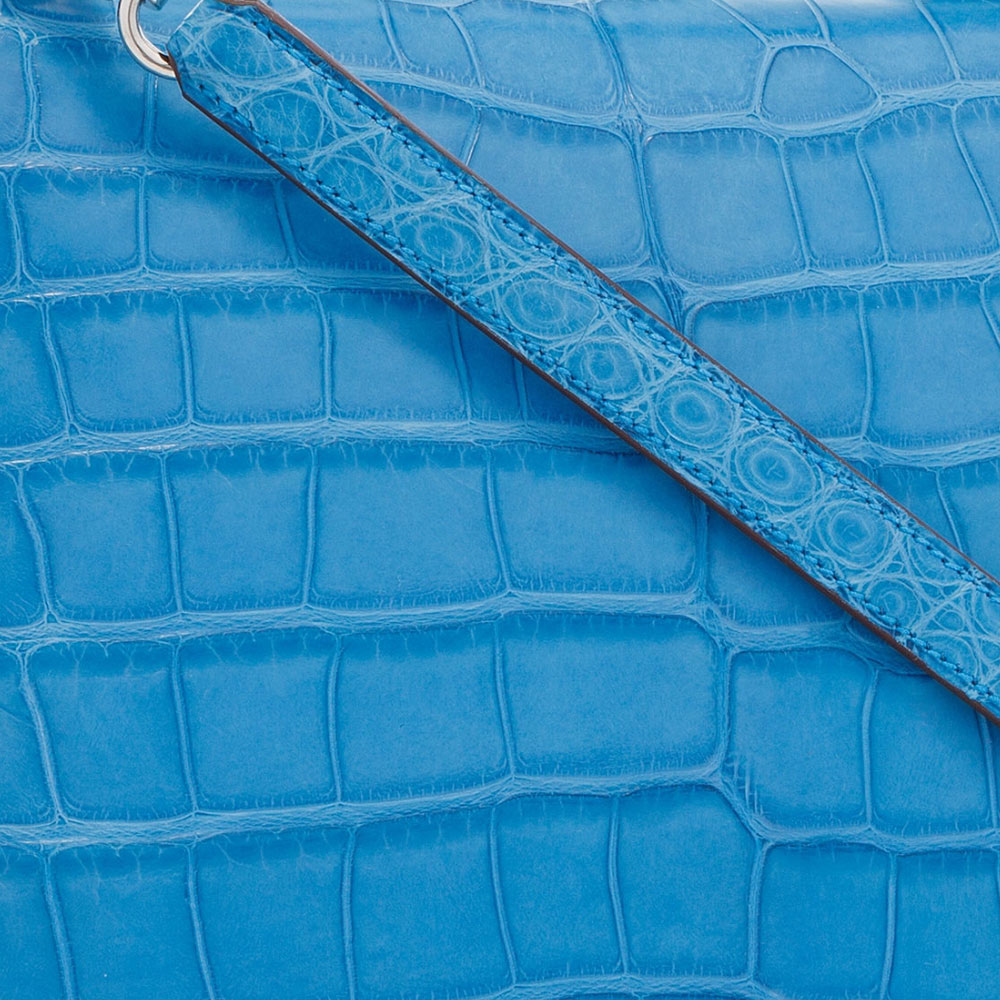
Shiny (Lisse) Alligator
The finish of Shiny Alligator is created by buffing the skin with a stone until a sheen develops; while Shiny Alligator is just as delicate as Matte, the sheen of Shiny Alligator scales can help disguise small imperfections.
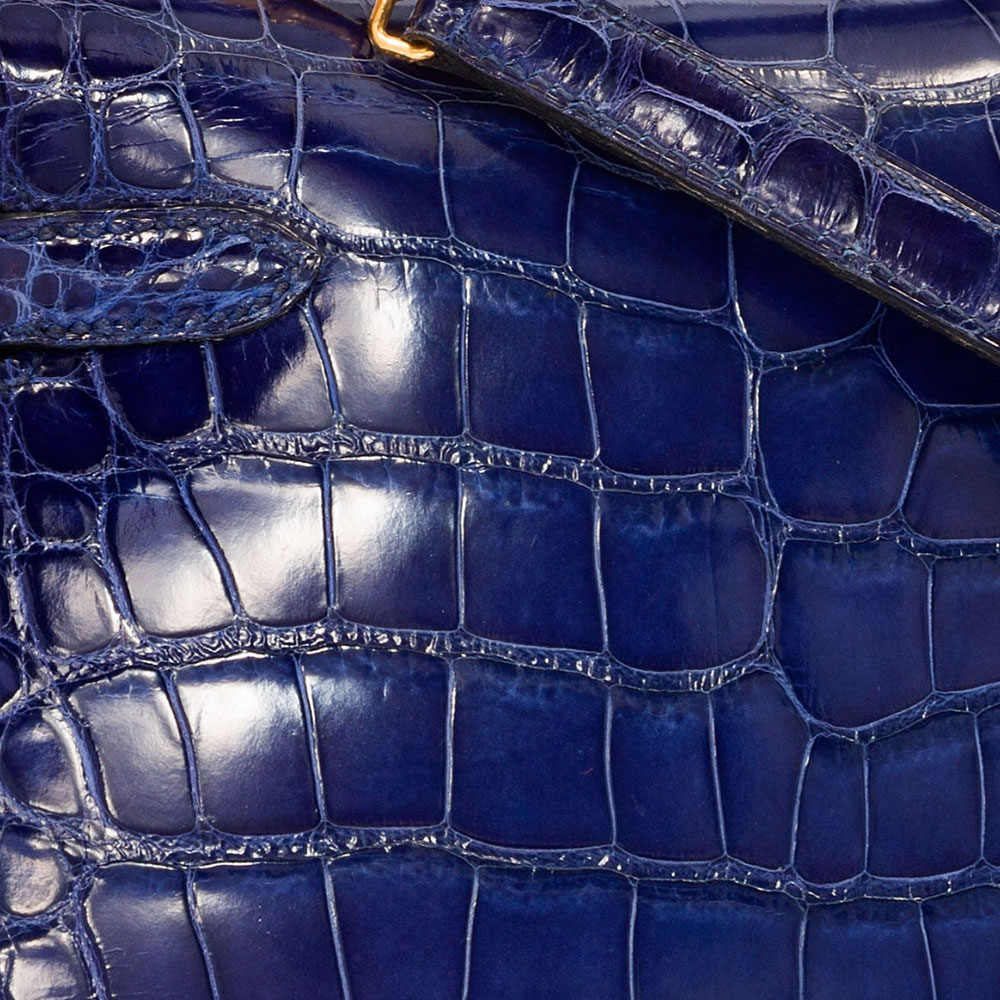
Hermès Crocodile Skins
Crocodile is an exotic leather similar to Alligator; the surfaces of both are delicate and should be treated with care. Crocodile is distinguishable from Alligator in that Crocodile scales have a pore, appearing as a dot in the center of each scale, which Alligator scales do not have.
As with Alligator, Crocodile items must be kept away from water; because it is not glazed or otherwise treated, if it gets wet, the water can create a permanent mark or stain (although it can be glazed, that should never be done more than twice to prevent creating an uneven surface, which can break down over time). Crocodile items come with a CITES certificate which should be carried with the bag when traveling.
There are three kinds of Crocodile Hermès utilizes: Niloticus, which comes from the Nile Region of Zimbabwe, Porosus, which comes from Australia, and Moreletii, which comes from Central and South America.
PurseForum Link: Ode to the Croco!, Crocodile and Alligator photos
Niloticus Crocodile
Niloticus Crocodile is farmed in Zimbabwe and is denoted by the . . (two dots) stamp. It is a very durable leather. It has larger, more oblong (rectangular) scales, and is less expensive than Porosus Crocodile.
Matte Niloticus Crocodile
As with Alligator, the Matte finish is created by rubbing the skin with felt, which means that the skin has to be as perfect as possible because any defects or blemishes will be visible. Matte Crocodile items tend to cost a little more than Shiny Crocodile.
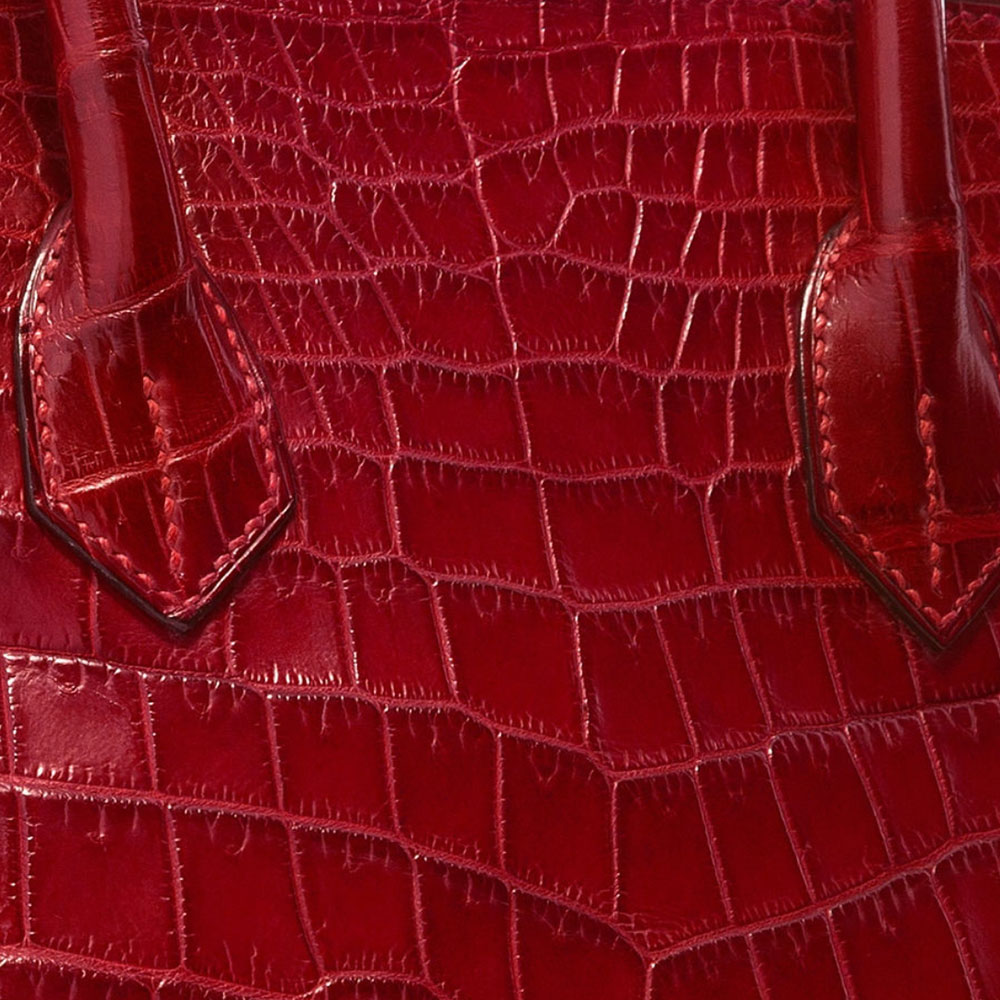
Shiny Niloticus Crocodile
The finish of Shiny Crocodile is created by buffing the skin with a stone until a sheen develops. While Shiny Crocodile is just as delicate as Matte, the sheen of Shiny Crocodile scales can help disguise small imperfections.
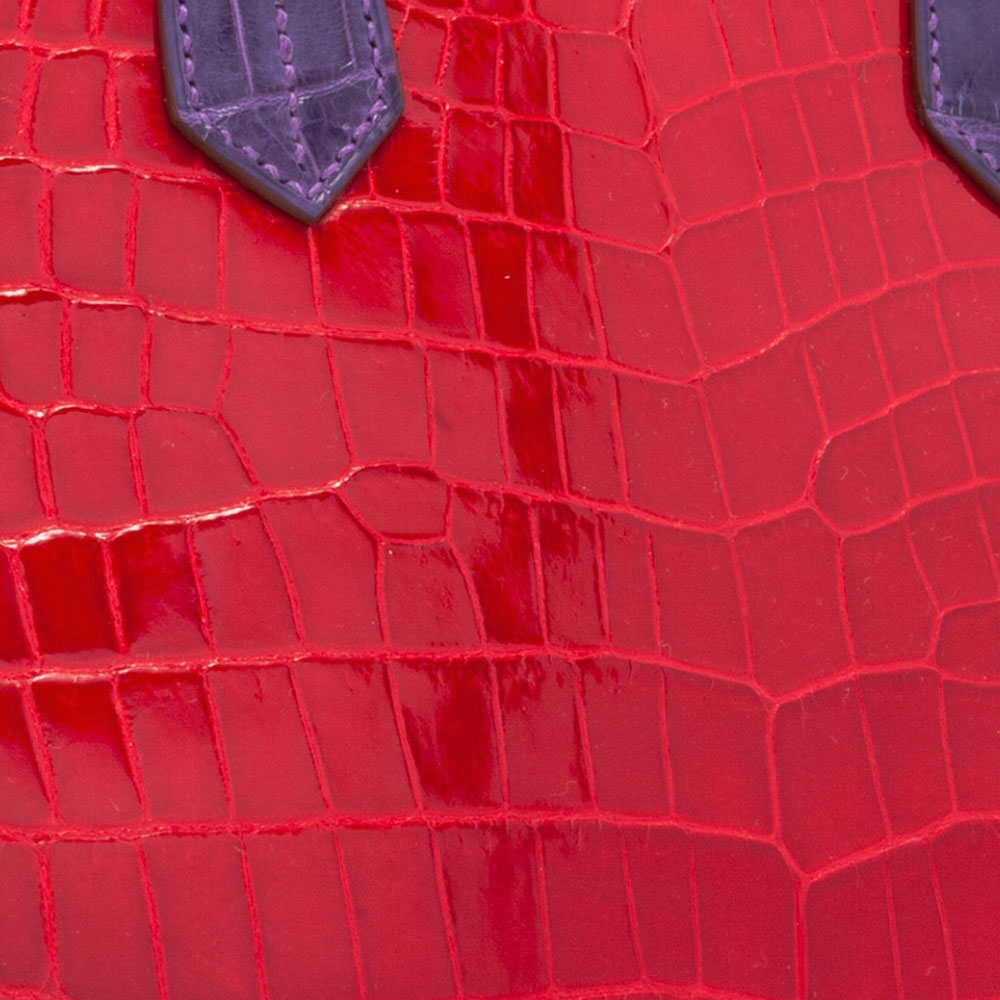
Porosus Crocodile
Porosus Crocodile is farmed in Australia and denoted by the ^ (carat) stamp. It is more expensive than Niloticus Crocodile. With is smaller, more symmetrical scales, Porosus Crocodile is the most esteemed of Hermès’ exotic leathers.
Matte Porosus Crocodile
As with Alligator, the Matte finish is created by rubbing the skin with felt, which means that the skin has to be as perfect as possible, because any defects or blemishes will be visible.
Matte Crocodile is more expensive than Shiny, and Porosus Crocodile is more expensive than Niloticus: Matte Porosus Crocodile is currently the most expensive leather Hermès produces.
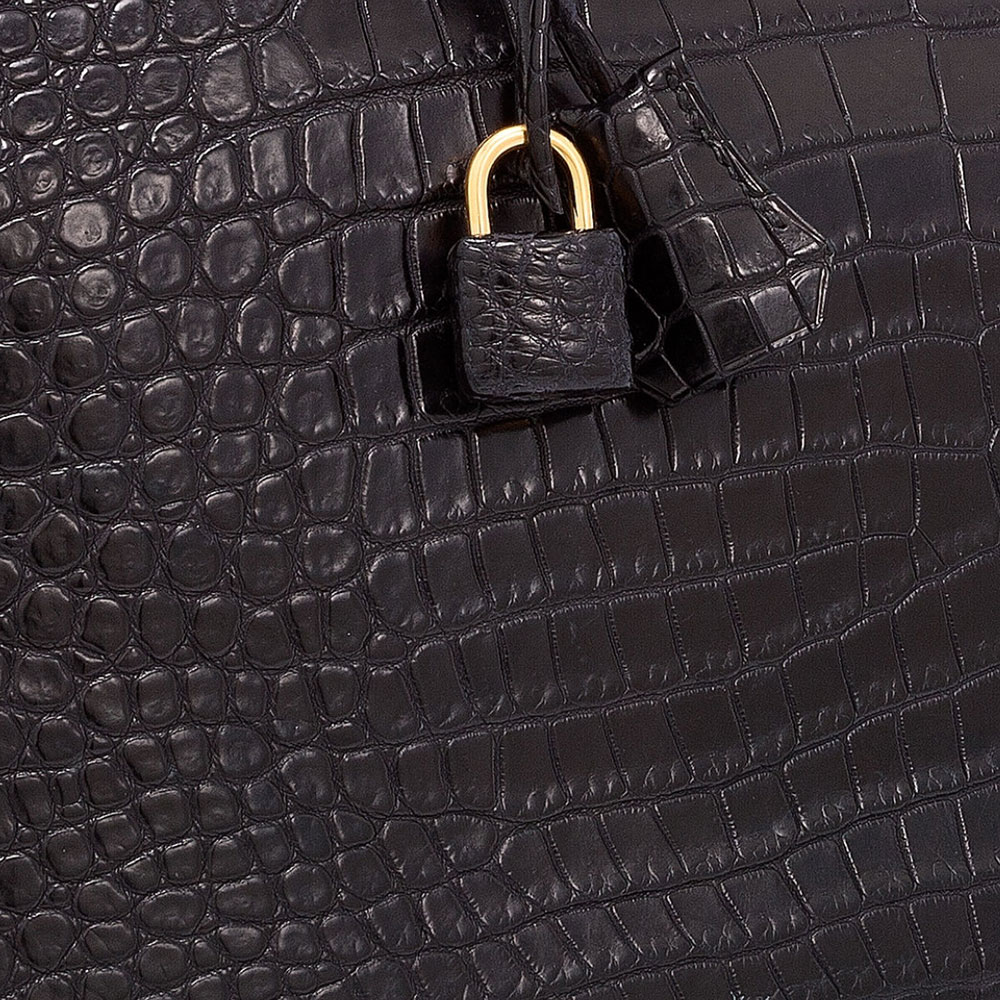
Shiny Porosus Crocodile
The finish of Shiny Crocodile is created by buffing the skin with a stone until a sheen develops; it is not glazed (and glazing should never be done more than twice to prevent an uneven surface, which can break down over time). While Shiny Crocodile is just as delicate as Matte, the sheen of Shiny Crocodile scales can help disguise small imperfections.
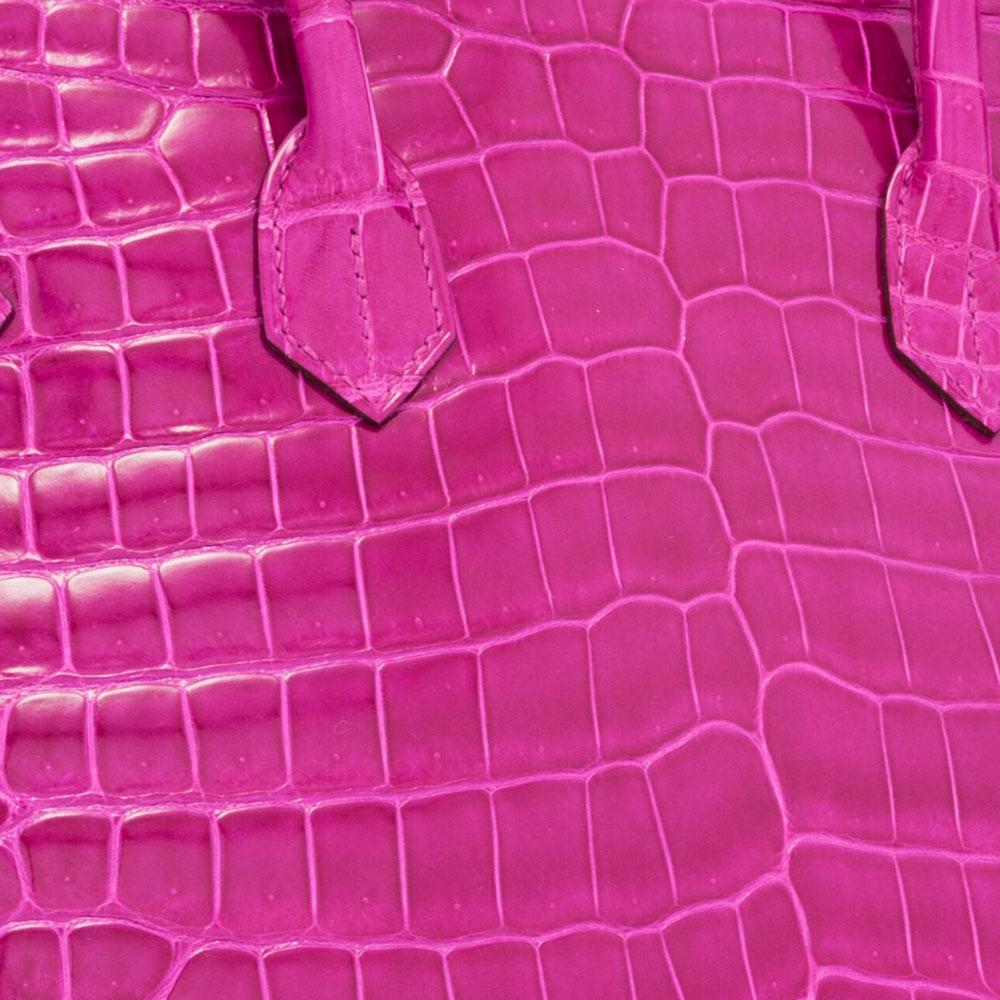
Moreletii Crocodile
Porosus Crocodile is farmed in Australia and denoted by the ^ stamp. It is more expensive than Niloticus Crocodile. With is smaller, more symmetrical scales, Porosus Crocodile is the most esteemed of Hermès’ exotic leathers.
Crocodylus Moreletii, also known as Morelet’s Crocodile, is native to Belize, Guatemala and Mexico; Hermès obtains its Moreletii from Mexico, which has breeding farms (as of 2004, Mexico had three captive-breeding operations for Moreletii, and began exporting it in 1997, see John Caldwell, 2006, World Trade in Crocodilian Skins, 2002-2004, p. 37. In: Crocodiles. Proceedings of the 18th Working Meeting of the Crocodile Specialist Group, IUCN – The World Conservation Union, Gland, Switzerland and Cambridge UK).
Moreletii Crocodile has been used for Hermès bag production very rarely; it is denoted by the . . . (three dots) stamp. Although, as noted above, the Porosus Crocodile is known as the most expensive leather utilized by Hermès, the Moreletii Croc is, in fact, slightly more expensive than Porosus.
The appearance of Moreletii Croc scales is very similar to Porosus scales, although the Moreletii scales are slightly smaller, flatter and more even. Additionally, the appearance of the Moreletii scales has been described as a cross between shiny and matte.
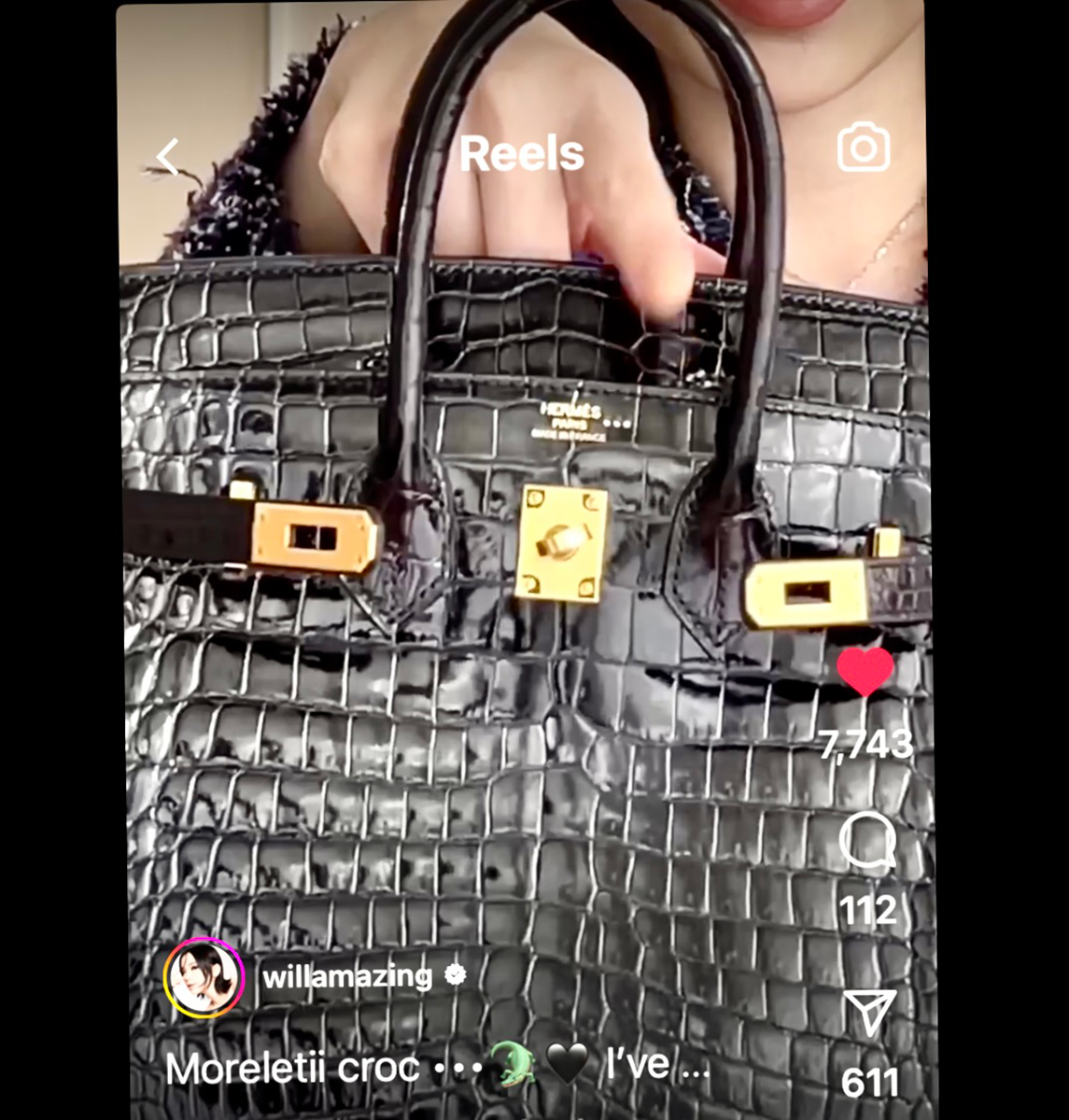
Lizard
Lizard is an exotic leather with smooth scales which are polished to a gloss with agate stones. Hermès has utilized Polished Lizard since the 1920s. While it is a firm leather that is scratch-resistant and will keep its shape, it is also delicate and prone to drying out. Bright colors in Lizard are also prone to fading with prolonged exposure to light. Water should be avoided, and due to the size of the skins, Lizard is generally limited to accessories and smaller bags.
PurseForum Links: Talk to Me About Lizard, Lizard! How Does It Wear?, Is Lizard Durable, Ostrich and Lizard photos
Ombre Lizard (Varanus Salvator)
Ombre Lizard is made from the Varanus Salvator, which comes from Southeast Asia, and is denoted by a = stamp. This leather is very smooth and shiny; the term “Ombre” refers to the natural light rings which are easy to see contrasted against the darker scales.
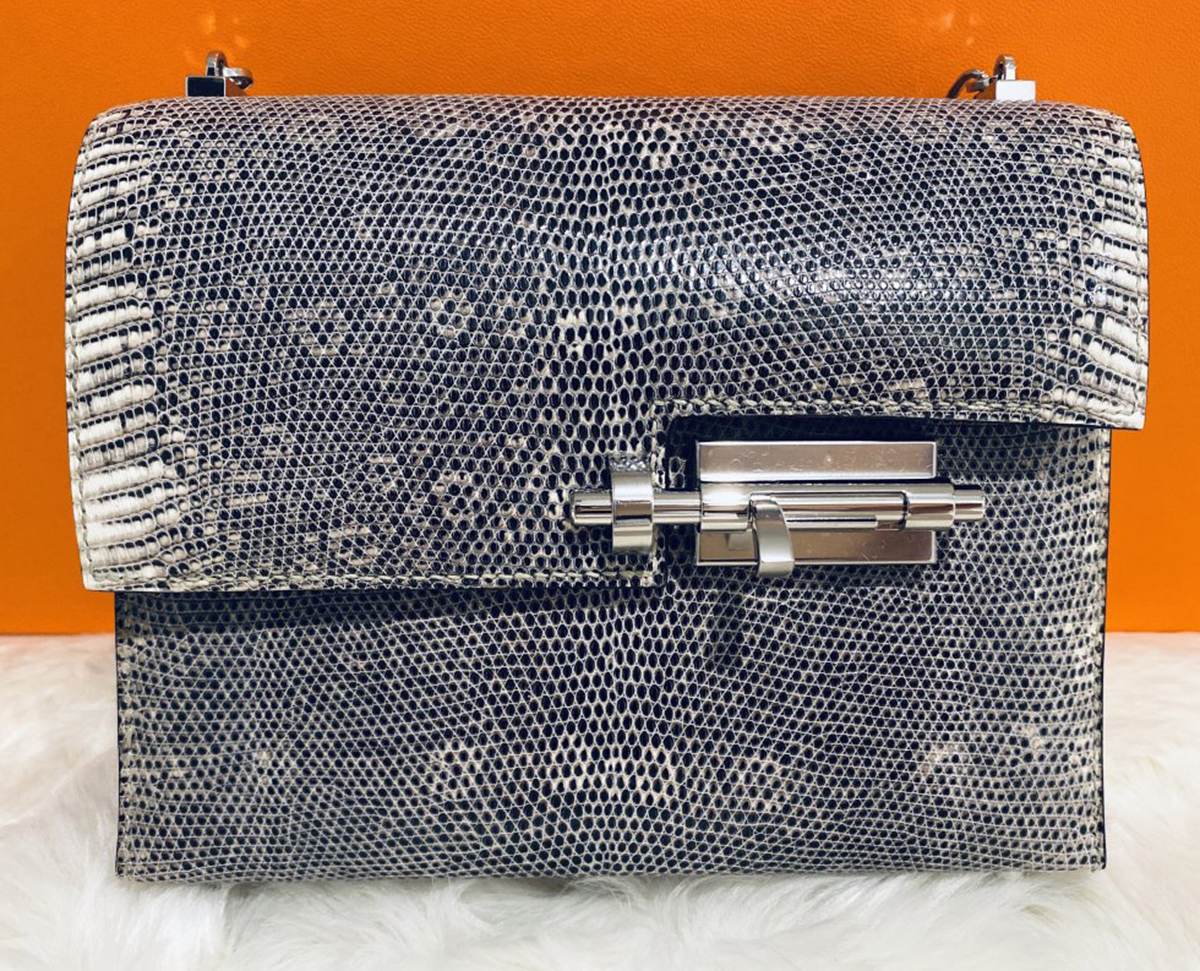
Polished Lizard (Varanus Niloticus)
Polished Lizard is produced from Varanus Niloticus, which comes from the Nile River and is denoted by a – stamp. It is available in both Matte and Shiny finishes, although even the Matte finish will appear relatively shiny due to the scales.
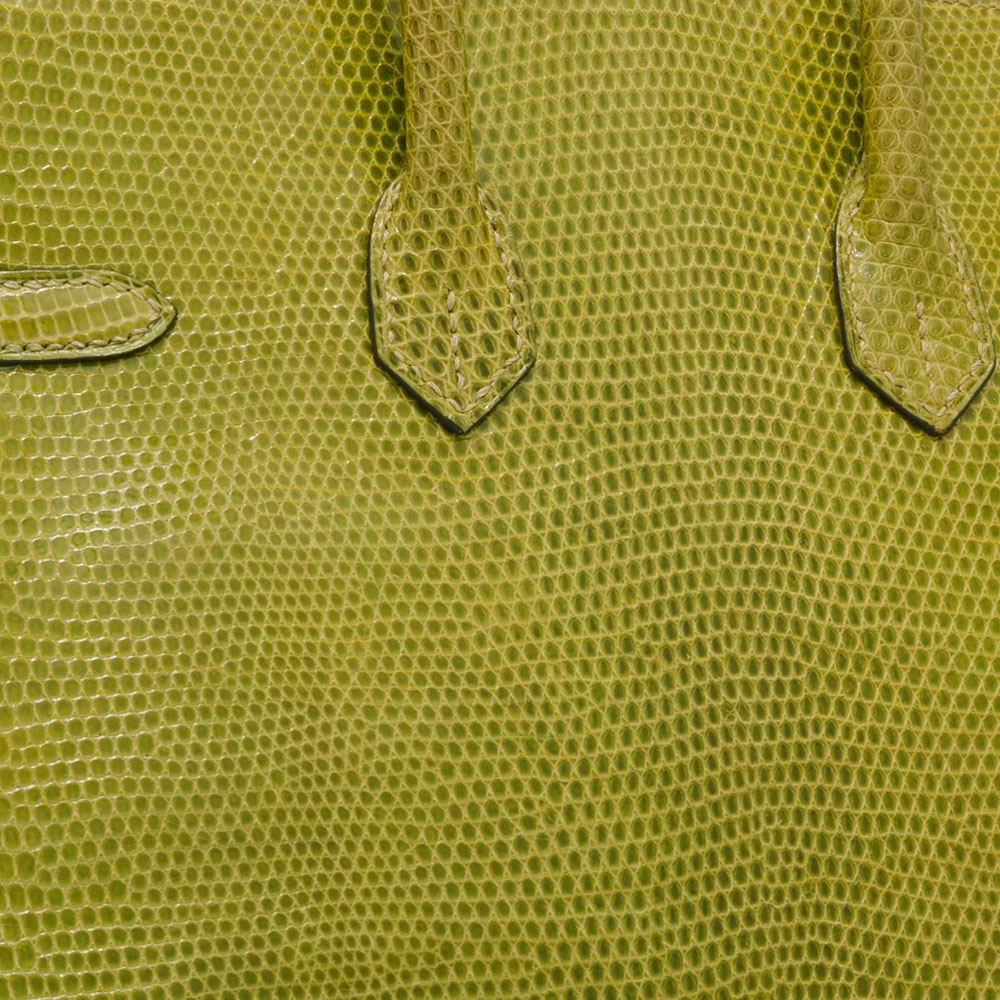
Ostrich
Ostrich has been used for Hermès bags since around 1920 and is easy to distinguish by its pattern of follicles; the process to prevent damage to the follicles includes flattening them and tripling the skin. Water-resistant and extremely durable (if properly cared for, items make with this leather can last for decades), Ostrich will keep its shape over time and can handle rain as long as it is wiped down afterward, but it is sensitive to light and oils, including the oils from your skin, which will cause the leather to darken.
Hermès Ostrich is farmed in South Africa and is an exotic leather; these items will come with a CITES certificate which should be carried with the bag when traveling.
PurseForum Links:Ostrich Bag Owners, A Beginner’s Question on Ostrich Leather, Ostrich and Lizard Photos
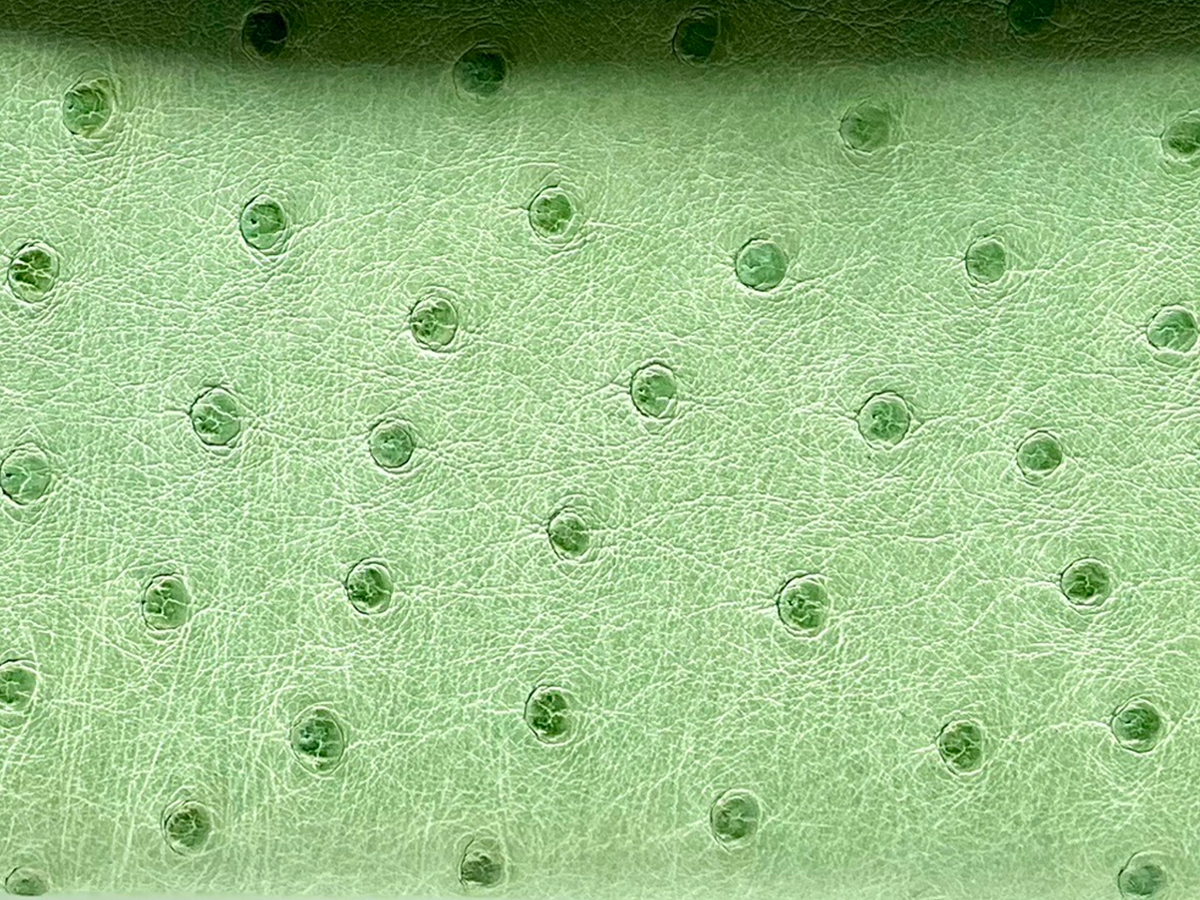
Hermès and Corporate Social Responsibility
Since the 1970s, the international community has been attempting to strike a balance between commerce and the preservation of natural resources. Hermès has been a proactive community member on both sides of that balance, ensuring the continuation of the various species utilized for leather production via production agreements, sustainable farming and relevant trade practices. Hermès’ longstanding commitment to sustainable development, under the heading of Corporate Social Responsibility (CSR) includes the following areas:
- Climate
- Biodiversity
- Animal Welfare
- Eco-Design
- Ethics, Human Rights and Diversities
- Resources Management
- Responsible Sourcing
- Employees Well-Being
- Transmission of Know-How
- Socially Responsible Business
For further information, please see the above links, Hermès’ 2022 CSR abstract, its sustainable development strategic framework, its Global Compacts, and other related documents here.
What is a CITES certificate?
CITES is an acronym for the Convention on International Trade in Endangered Species of Wild Fauna and Flora. Also called the Washington Convention, CITES is a treaty adopted by the International Union for Conservation of Nature (IUCN) in 1973 (effective July 1, 1975) with the purpose of ensuring the preservation of more than 38,000 species of animals and plants.
It was signed by 80 member countries, and currently includes the member-states of the United Nations (non-members include: East Timor, Haiti, Kiribati, Marshall Islands, Micronesia, Nauru, North Korea, South Sudan, Turkmenistan, Tuvalu, the Holy See and the Faroe Islands).
All items Hermès produces using any species protected by CITES must be accompanied at the time of sale with a document, also known as CITES (or a CITES document or certificate), which states certain signifying information about the item and indicating that the item was produced and sold in accordance with the rules of the Convention. Any item covered by CITES must also be accompanied by the CITES document when traveling internationally.





